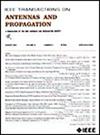Multiple-Frequency-Band Channel Characterization for In-Vehicle Wireless Networks
IF 4.6
1区 计算机科学
Q1 ENGINEERING, ELECTRICAL & ELECTRONIC
引用次数: 0
Abstract
In-vehicle wireless networks are crucial for advancing smart transportation systems and enhancing interaction among vehicles and their occupants. However, there are limited studies in the current state-of-the-art that investigate the in-vehicle channel characteristics in multiple frequency bands. In this article, we present measurement campaigns conducted in a van and a car across below 7 GHz, millimeter-wave (mmWave), and subterahertz (sub-THz) bands. These campaigns aim to compare the channel characteristics for in-vehicle scenarios across various frequency bands. Channel impulse responses (CIRs) were measured at various locations distributed across the engine bay of both the van and the car. The CIR results reveal a high similarity in the delay properties between frequency bands below 7 GHz and mmWave bands for the measurements in the engine bay. Sparse channels can be observed at sub-THz bands in the engine bay scenarios. Channel spatial profiles in the passenger cabin of both the van and the car are obtained by the directional scan sounding (DSS) scheme for three bands. We compare the power-angle delay profiles (PADPs) measured at different frequency bands in two line-of-sight (LOS) scenarios and one non-LOS (NLOS) scenario. Some major multipath components (MPCs) can be identified in all frequency bands and their trajectories are traced based on the geometry of the vehicles. The angular spread of arrival is also calculated for three scenarios. The analysis of channel characteristics in this article can enhance our understanding of in-vehicle channels and foster the evolution of in-vehicle wireless networks.车载无线网络多频段信道特性研究
车载无线网络对于推进智能交通系统和增强车辆与乘员之间的互动至关重要。然而,目前对多频段车载信道特性的研究非常有限。在本文中,我们介绍了在货车和汽车上进行的7 GHz以下、毫米波(mmWave)和次太赫兹(sub-THz)频段的测量活动。这些活动旨在比较不同频段的车载场景的信道特性。通道脉冲响应(cir)在分布在面包车和汽车发动机舱的不同位置进行测量。CIR结果显示,在发动机舱内测量的7 GHz以下频段和毫米波频段之间的延迟特性高度相似。在发动机舱场景中,在亚太赫兹波段可以观察到稀疏信道。采用三波段定向扫描测深(DSS)方法,获得了货车和轿车客舱内的通道空间剖面。我们比较了在两种视距(LOS)场景和一种非视距(NLOS)场景下不同频段测量的功率角延迟曲线(PADPs)。一些主要的多路径组件(mpc)可以在所有频带中识别,并根据车辆的几何形状跟踪其轨迹。还计算了三种情况下的到达角扩展。本文对车载信道特性的分析可以增强我们对车载信道的认识,促进车载无线网络的发展。
本文章由计算机程序翻译,如有差异,请以英文原文为准。
求助全文
约1分钟内获得全文
求助全文
来源期刊
CiteScore
10.40
自引率
28.10%
发文量
968
审稿时长
4.7 months
期刊介绍:
IEEE Transactions on Antennas and Propagation includes theoretical and experimental advances in antennas, including design and development, and in the propagation of electromagnetic waves, including scattering, diffraction, and interaction with continuous media; and applications pertaining to antennas and propagation, such as remote sensing, applied optics, and millimeter and submillimeter wave techniques

 求助内容:
求助内容: 应助结果提醒方式:
应助结果提醒方式:


